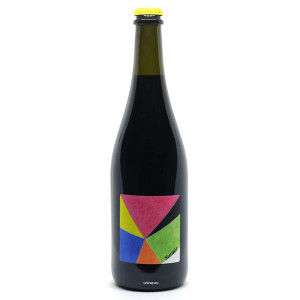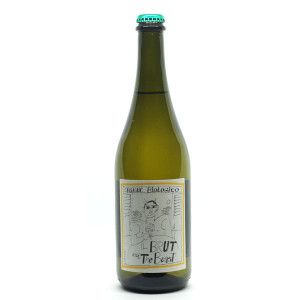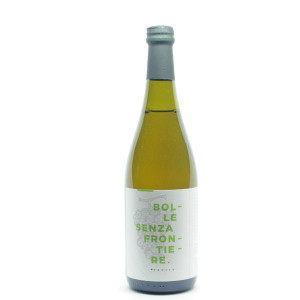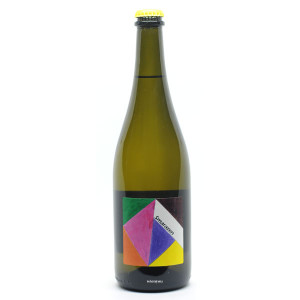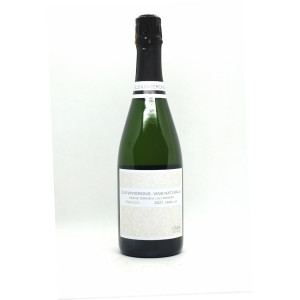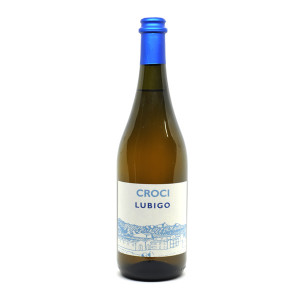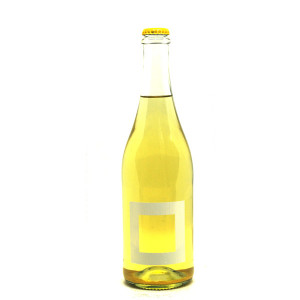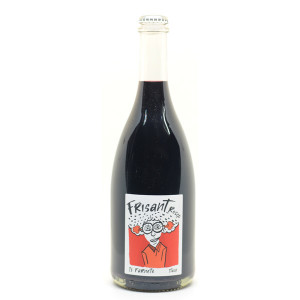"Surlie" by Mirko Mriotti is a lively and dynamic sparkling red wine that comes from grapes of Fortana in purity. Purplish red color, slightly turbid with a good effervescence. On the nose the aromas are intense and fine with floral and fruity scents. In the mouth it is dry, warm, fairly soft but fresh and tasty, with a bitter finish.
Region: Emilia Romagna.
Grapes: Fortana.
Alcohol content: 12.5%.
Aging: Refermentation in the bottle.
Contains sulfites
Bruto and The Beast is a bottle refermented wine obtained from white grapes according to the bottle refermentation method. The grapes come from vineyards located on limestone and loamy soils at 350 m.s.l.m. First fermentation in steel tanks without maceration and refermentation in the bottle with the addition of must. A sparkling wine with a lively foam that expresses fresh floral notes and fragrant fruity scents to the nose, offering a pleasant olfactory bouquet. The taste is smooth, fresh and smooth, with good persistence and excellent drinkability. A wine synonymous with celebration and lightness.
Denomination: Sparkling wine
Grapes: White grapes
Alcohol content: 12%.
Aging: Refermented in the bottle.
Contains sulfites
The Sèt and the Mèz appear to be a light colored cerasuolo with a beautiful foam. A nose bouquet is a bouquet of roses, delicate but delicious, and fruity notes. At the sip it expresses freshness accompanied by compact and material bubbles.
Region: Emilia Romagna.
Grapes: Fortana
Alcohol content: 12,5%.
Aging: Refermentation in the bottle.
Contains suflites
Bolle Senza Frontiere is a wine refermented in the bottle according to the ancestral method, without the addition of yeast or sugar, obtained from a blend of white wines. Straw yellow in color with a lively foam. The nose expresses fresh floral notes and fragrant fruity scents, offering a pleasant olfactory bouquet. The tasting is smooth, fresh and soft, with good persistence and excellent drinking. A wine synonymous with celebration and lightness.
Grapes: White grapes
Alcohol content: 13%.
Aging: Refermented in the bottle.
Contains sulfites
Smarazed is a sparkling wine much appreciated for its freshness and flavor, which comes from a blend of Trebbiano Romagnolo and Malvasia di Candia. It has a slightly turbid straw yellow color with a good effervescence. On the nose intense and fine aromas of floral and fruity scents are released. In the mouth it is dry, warm, fairly soft but fresh and tasty, with a good finish.
Region: Emilia Romagna.
Grapes: 70% Trebbiano Romagnolo, 30% Malvasia di Candia.
Alcohol content: 12%.
Aging: Refermentation in the bottle.
Contains sulfites
Rosè and The Beast is a bottle refermented wine obtained from red grapes according to the bottle refermentation method. The grapes come from vineyards located on limestone and loamy soils at 350 m.s.l.m. First fermentation in steel tanks without maceration and refermentation in the bottle with the addition of must. A sparkling wine with a lively foam that expresses fresh floral notes and fragrant fruity scents to the nose, offering a pleasant olfactory bouquet. The taste is smooth, fresh and smooth, with good persistence and excellent drinkability. A wine synonymous with celebration and lightness.
Denomination: Sparkling wine
Grapes: Local red grapes
Alcohol content: 12,5%.
Aging: Refermented in the bottle.
Contains sulfites
“Uva d'oro” by Mirko Mariotti is a sparkling wine made from Fortana grapes obtained with long re-fermentation in an autoclave. A straight and dynamic wine on the sip, a bubble that envelops the palate, where aromas of small red fruits such as blackberry and strawberry stand out. A finish of good flavor that attracts another taste.
Region: Emilia Romagna.
Grapes: Fortana
Alcohol content: 11,5%.
Aging: Refermentation in the autoclave.
Contains suflites
Santyuste Vino de Pueblo is a tasty and lively white wine produced with Verdejo from vineyards between the ages of 140 and 200, which are found in four different sites at an altitude of about 800-850 meters, planted on calcareous and sandy soils. It is bottled without fining or filtration and without added sulfites.
Region: Spain, Penedes
Grapes: Xarel-lo.
Alcohol content: 11,5%.
Aging: 12 months in barrel.
Contains sulfites
A prosecco, smart, elegant, of great drink; With yellow apple scents, peach, and tropical fruit. In the mouth a living acidity compensated by fruit from tropical accents and light notes of citrus honey. The sugar residue is 4 g / l.
Region: Veneto.
Grapes: 90% Glera, 5% Bianchetta Trevigiana, 5%, Perera.
Alcohol content: 11%.
Aging: 4 months on the lees.
Contains sulfites
Lubigo is a fresh sparkling wine and a drinkable wine based on excellent horticultural grapes with the method of fermentation in the bottle. It is delicate, fine and pleasantly acid. Closes with the typical almond finish. A pleasant wine of excellent drinkability.
Grapes: Local white grapes.
Alcohol content: 11,5%.
Aging: Refermentation in the bottle.
Contains sulfites
Mirko Mariotti's Turnè is a sparkling wine obtained from refermentation in the bottle without "disgorgement" based on Trebbiano and Grecheto grapes. "Sur lie" wine, to be served clear or cloudy depending on personal tastes. It goes well with appetizers of Emilian cured meats or in company with friends.
Region: Emilia Romagna.
Grapes: Trebbiano and Grechetto.
Alcohol content: 12.5%.
Aging: Refermentation in the bottle.
Contains sulfites
Mirko Mariotti's Treb is a fresh and savory wine obtained from Trebbiano grapes with the method of refermentation in the bottle. The grapes come from vines over 100 years old which are located just 300 meters from the Adriatic Sea. Spontaneous fermentation with short maceration time on the skins and bottling for refermentation without adding anything. Never foul. Refinement of 4 months in the bottle before release. Very treb, very delicious. Enjoy the sun with a light meal and lots of positive people.
Region: Emilia Romagna.
Grapes: Trebbiano.
Alcohol content: 12%.
Aging: Refermentation in the bottle.
Contains sulfites
Frisant Rosso del Farneto is a sparkling wine that stands out for its fresh and lively characteristics. Produced primarily from red grapes, it reflects the winemaking traditions of Emilia-Romagna and offers an engaging sensory experience. Bottle refermentation is a method that gives the wine its natural bubbles, making it particularly lively and light. The result is a juicy and crunchy wine, with fruity and floral aromas, which lend themselves well to being paired with a variety of dishes, from cured meats to fresh cheeses, up to meat and pasta dishes. Its versatility makes it ideal for any occasion, from celebrations to informal dinners. If you are looking for a wine that can cheer up your palate and accompany convivial moments, Frisant Rosso del Farneto is certainly an excellent choice.
Regione: Emilia Romagna
Grapes: Red white
Alcohol content: 11%.
Aging: Refermentation in the bottle
Contains sulfites
Frisant Bianco del Farneto is a frank sparkling white wine, pleasantly sparkling and easy to drink and smooth. Obtained from Spergola and Sauvignon grapes with the method of spontaneous refermentation in the bottle. Strictly unfiltered.
Regione: Emilia Romagna
Grapes: Sperola and Sauvignon.
Alcohol content: 11,5%.
Aging: Refermentation in the bottle
Conatins sulfites
On the Moon by Tenuta Demaio is a 100% Bombino white wine refermented in the bottle using the same must of the base. The yeasts present in the bottle guarantee a continuous refinement until it is drunk. We recommend drinking it cloudy, Shake and Fun!
Region: Puglia.
Grapes: Bombino bianco
Alcohol content: 10.5%.
Aging: Refermentation in the bottle.
Contains sulfites


